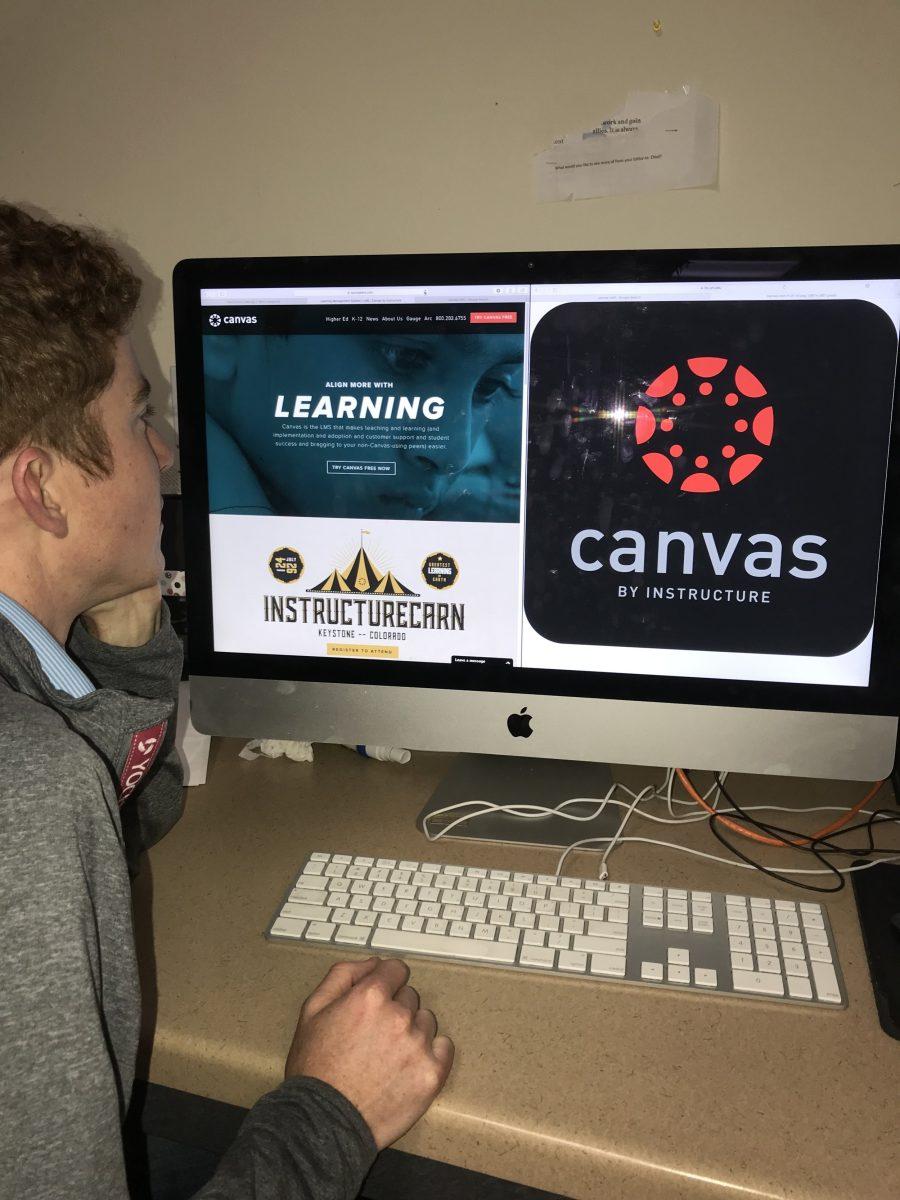A proposed switch from Moodle to a new learning management system known as “Canvas” has some Sonoma State University faculty members concerned that it could threaten all of the hours of work they have done in building their courses, and inputting test questions, on Moodle.
According to the Learning Management System, or LMS, home page on Sonoma State’s website, the look into a new platform is due to “faculty feedback regarding the usability of the Moodle platform, the campus Moodle outage in Fall 2016 and campus awareness of new and improved options in the marketplace.”
The proposed switch to a new learning management system called “Canvas” may have flown under many students radar, but the approaching Spring decision deadline raises concerns. “I can’t figure out why administrators are pushing for something that the vast majority of faculty don’t want,” said Dr. Elizabeth Stanny, professor of accounting at Sonoma State.
Michael Santos, a professor of economics at Sonoma State, is concerned that a switch to Canvas could mean more work for both professors and students.
“While our students are expected to pay higher tuition and fees for their education because of a shortfall in the SSU budget, I think, it is frivolous for our faculty members to suggest a switch to Canvas especially given that the Moodle system can deliver course content effectively,” said Santos. An an analysis of Canvas’ financial condition published by Stanny on her website, raises financial concerns about the switch from the open source Moodle software to the Canvas system, which is run by the publicly owned “Instructure” company, she said.
In this report, Stanny states that “for every $1 of revenue it (Canvas) has 63 cents of Sales and Marketing expense” and “for every $1 of revenue it loses 48 cents”. These numbers and her claim that “Canvas executives have no experience in the educational market, but have lots of experience marketing” are especially alarming when shown alongside the 20 pages of risk reports Canvas filed with the SEC.
An excerpt from these pages cites an “incurred net losses of $110.9 million, $53.0 million, and $41.4 million 2016, 2015, and 2014, respectively” and an accumulated deficit of $196.5 million at December 31, 2016.
According to Sonoma State, there are currently 16 professors assessing the use of Canvas on campus, using the platform in their everyday use. Chemistry professor Carmen Works, said she volunteered to participate in the assessment of a different LMS because she is a leader in faculty governance. Works explained that while Moodle and Canvas can be similar, they are driven by different user interfaces. According to Works, students in her section do not have a preference between Moodle or Canvas.
According to Sonoma State, Provost Lisa Vollendorf has set aside $300,000 to support training and migration of current courses into a new LMS. The Academic Senate will also use their May 1 meeting date to take recommendations on what LMS is best.
While there is no definitive answer from the administration on this may affect student tuition, Dr. Stanny says that students have other concerns.
“If I was a student I would also be concerned with a commercial company collecting and using my “personally identifiable information, or PII, and other data from customers and users” said Stanny. The Canvas risk factors detail that they collect PII to “expand and support our business” as well as their practice to “share customers’ or users’ PII with third parties. Santos strongly suggested that students voice their concerns to Canvas representatives and use their own judgement to determine a stance. Stanny also suggested that students voice support for faculty assistance in training with the new system, as well as stressed the importance of the Academic Technology and Instructional Spaces Subcommittee as a place where opinions can be voiced.
Santos acknowledged his heavy use of moodle for not only its teaching ability, but its variety of uses in helping students. “I am guessing that only a fraction of the faculty members are heavy users of Moodle,” said Santos, “I deliver the course contents in many forms using the the site’s most powerful tools, such as randomizing quiz questions.
With the detailed criticism of Canvas published online, students are encouraged to read into it further themselves and keep up to date on the coming decision process. Students can find.
Stanny’s analysis at (https://estanny.com/post/canvas-instructure-financial-condition/).





![[Both photos courtesy of sonoma.edu]
Ming-Ting Mike Lee stepped in as the new SSU president following Sakakis resignation in July 2022](https://sonomastatestar.com/wp-content/uploads/2024/04/CC4520AB-22A7-41B2-9F6F-2A2D5F76A28C-1200x1200.jpeg)



























